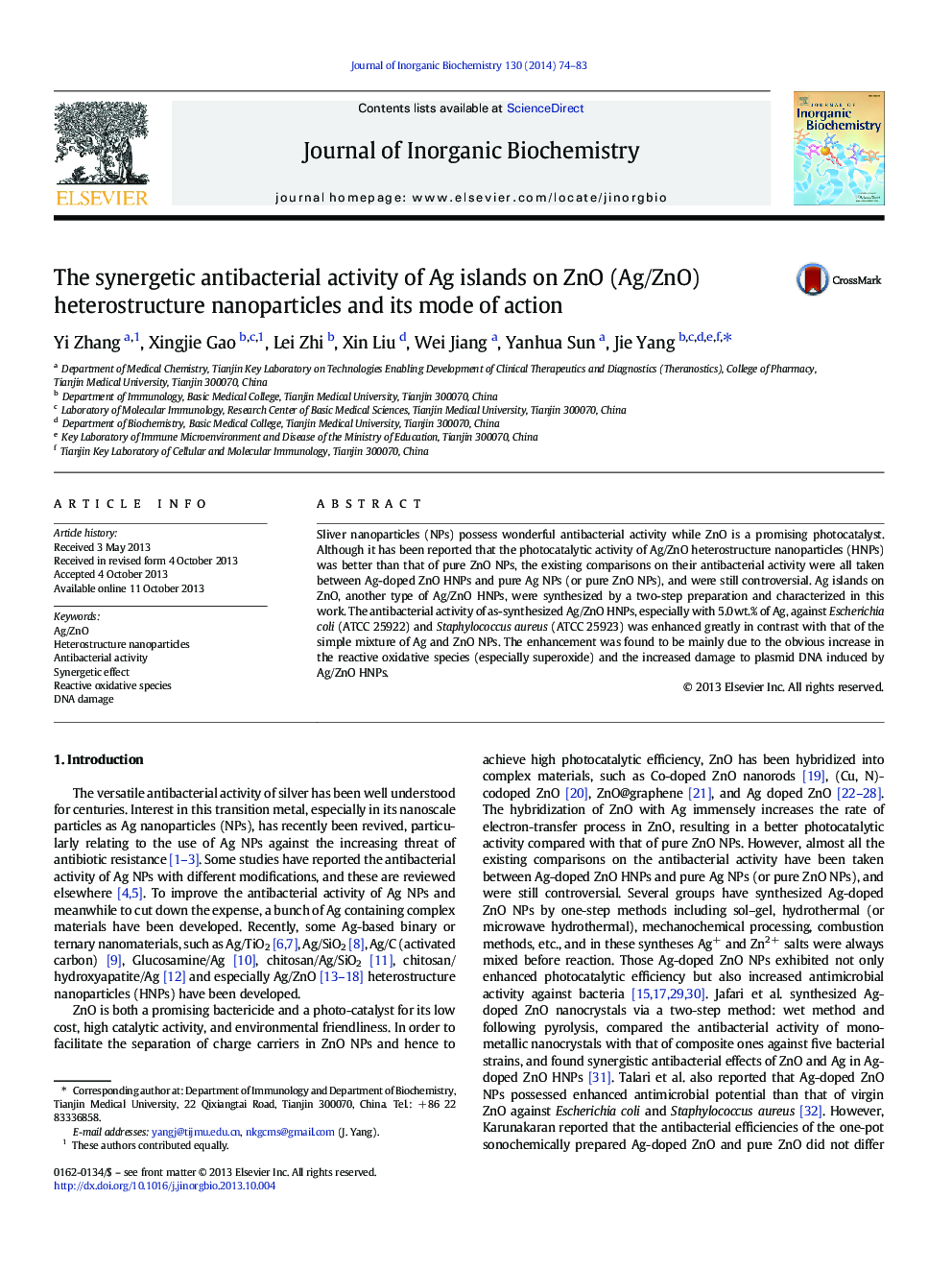| Article ID | Journal | Published Year | Pages | File Type |
|---|---|---|---|---|
| 1316291 | Journal of Inorganic Biochemistry | 2014 | 10 Pages |
•Ag islands on ZnO (Ag/ZnO HNPs) showed enhanced antibacterial activity.•Interfacial interaction between Ag and ZnO contributes to the enhanced activity.•Increased cellular oxidative stress and DNA damage were induced by Ag/ZnO HNPs.•Ag/ZnO HNPs only attached onto and broke the bacterial cells but did not enter.
Sliver nanoparticles (NPs) possess wonderful antibacterial activity while ZnO is a promising photocatalyst. Although it has been reported that the photocatalytic activity of Ag/ZnO heterostructure nanoparticles (HNPs) was better than that of pure ZnO NPs, the existing comparisons on their antibacterial activity were all taken between Ag-doped ZnO HNPs and pure Ag NPs (or pure ZnO NPs), and were still controversial. Ag islands on ZnO, another type of Ag/ZnO HNPs, were synthesized by a two-step preparation and characterized in this work. The antibacterial activity of as-synthesized Ag/ZnO HNPs, especially with 5.0 wt.% of Ag, against Escherichia coli (ATCC 25922) and Staphylococcus aureus (ATCC 25923) was enhanced greatly in contrast with that of the simple mixture of Ag and ZnO NPs. The enhancement was found to be mainly due to the obvious increase in the reactive oxidative species (especially superoxide) and the increased damage to plasmid DNA induced by Ag/ZnO HNPs.
Graphical abstractThe antibacterial activity of Ag islands on ZnO HNPs (especially with 5.0 wt.% of Ag) is obviously enhanced in comparison with the simple mixture of Ag NPs and ZnO NPs.Figure optionsDownload full-size imageDownload as PowerPoint slide
